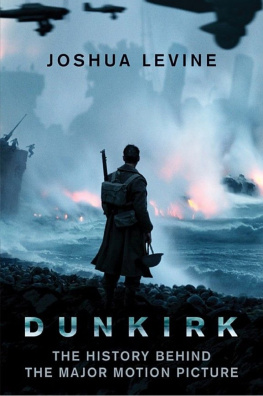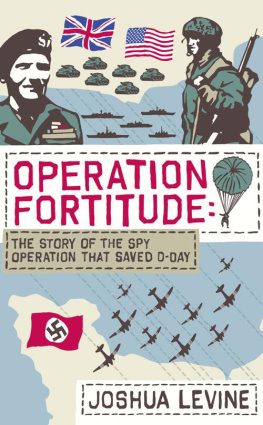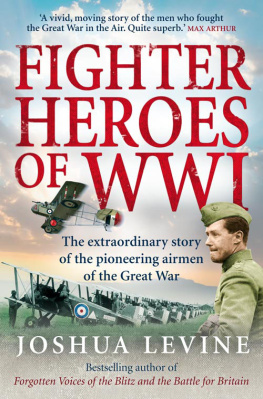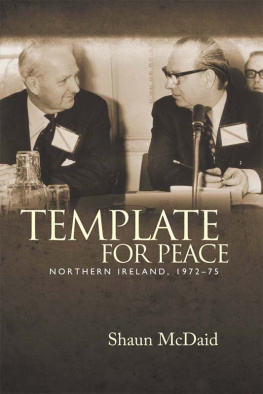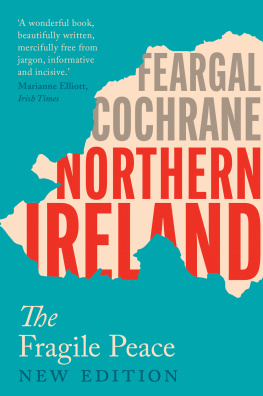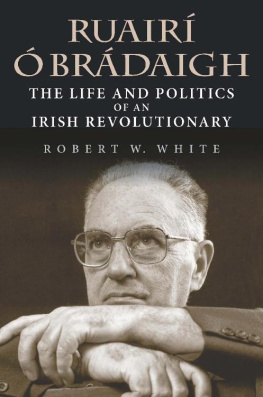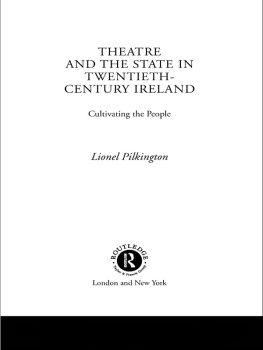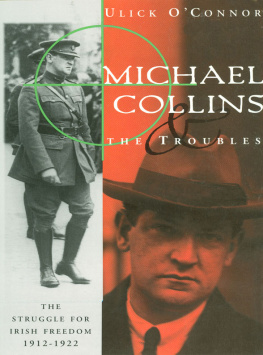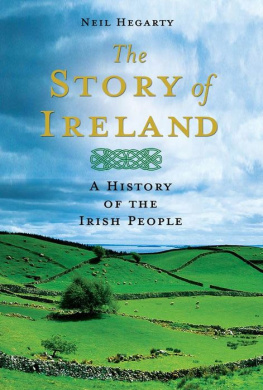1
THE STRANGER
In the autumn of 2008 I flew into Belfast to begin a journey. I had little idea where it would take me, although I knew that its first night would be spent in the Madison Hotel on Botanic Avenue. As I stood at the airport baggage carousel, I was nervous. I had never been to Northern Ireland before, and I decided that I ought to have a first impression, so I began to pay deliberate attention to everything around me. In the end I neednt have worried because my first actual impression almost overwhelmed me. The taxi driver taking me into town asked my name and, within a beat of my reply, asked whether I was a Jew. I said I was. My sons name is Reuben, he said. He sounds like more of a Jew than you. I had absolutely no idea what to say. The Catholics are anti-Semitic, they support the PLO, he continued, but Im a Presbyterian and we like you. He assured me that I had nothing to worry about because, when Christ comes again, the Jews are going straight to heaven. If I wanted to understand more, then I should visit an Orange Lodge. On he went, as though sent by the Tourist Board to give me an unforgettable first impression. Eventually, with a smile and a handshake, he dropped me outside the hotel.
I was in Belfast to try to discover what the Troubles had been about. I wanted to find out the history behind them, and in order to do that I wanted to meet the people who had lived through them, those who had suffered, and those who had caused the suffering. I wanted to know why people had behaved as they did, how representative they had been, and whether they now try to justify their actions. And I wanted a sense of the future, of whether Northern Ireland is moving beyond the Troubles. And so here I was, ten minutes into my journey, with lots of questions, and a place in heaven to look forward to.
I have a particular memory of the Troubles. Bombs and bullets did not affect me in any real way, but it is a memory worth recounting because it mirrors the experience of many who lived in London during the Seventies and Eighties, for whom the Troubles were always in the background. On a summers afternoon in 1982 I was at home, wearing a green football shirt and gloves. I cleared some space on the floor, took down a picture, and started throwing a ball against the wall, diving to save it as it came back. I would play like that for hours, but on this particular day I was interrupted by a loud noise. Half a mile away, in the Inner Circle of Regents Park, a bomb planted underneath a bandstand blew up. In that moment seven people were torn to pieces.
I knew the bandstand very well. My father would take my sister and me to sit in deckchairs by the lake, where we would listen to brass bands playing funny mixes of military marches and West End show tunes. And now the masked bogeymen of the Provisional Irish Republican Army had decided to kill the performers who had been in the middle of a medley from Oliver! in front of people like us whod come along to listen. According to a member of the audience, Suddenly there was this tremendous whoosh and I saw a leg fly past me. The bandstand seemed to lift off and I could see bandsmen flying through the air. For a moment I could not believe it. I had not witnessed the bomb, but I can remember the bleakness and confusion that it conjured up. Who in the name of God had done this and why?
As the years went by, I, like almost every other English person, became very familiar with reports of the Troubles in the papers and on the news. But the sensible questions never seemed to be asked. The reports all blended into one another, leaving me with a tired stream of images so clichd they sometimes bordered on the comic. I got to know men in bowler hats marching down streets, men in balaclavas firing over coffins and men with dubbed voices defending the latest outrage, but I had no context for these people, no real sense of them. I never noticed any genuine discussion about what they were fighting for, or how the situation might be resolved. Bombs and death just seemed to be things that happened over there and sometimes over here. The media seemed to want us to believe that Northern Ireland was populated by two kinds of people: bigots and psychopaths. If the real attitudes and beliefs of the people of Northern Ireland were ever reported as they must have been they certainly never filtered through to me. I cannot have been the only person in Britain to have been left in the dark about a subject that was never out of the news. Now I wanted to find out more.
As I was to discover, I had not been alone in my ignorance. The British government had very little sense of historical context when it sent its troops into Northern Ireland in August 1969. The arrival of its soldiers, in response to escalating violence, marked the start of the governments active participation in the Troubles, and represented an unusually vigorous British reaction to an old problem. For the first fifty years of Northern Irelands existence, the British government had kept the province at arms length. Northern Ireland was given its own parliament at Stormont, to set policy on internal matters, allowing Whitehall and Westminster to remain in the background. One little Home Office unit might cast an occasional glance towards Ulster, but the units importance can be gauged by the fact that it was also responsible for the Channel Islands, the Isle of Man, and the state licensing system in Carlisle. According to Ken Bloomfield, the retired head of the Northern Ireland Civil Service, there were times when the government was less in touch with what was happening in its own province than it was with what was happening in Gambia or Outer Mongolia.
In 1970 Reginald Maudling, the British Home Secretary, boarded a plane bringing him home from Northern Ireland with the words, For Gods sake, someone bring me a large scotch. What a bloody awful country He gasped for a drink because he simply did not know what do about the essential problem of Northern Ireland, a problem that still exists today: the province is populated by two distinct groups. The overwhelmingly Protestant unionists consider themselves British and want the north to remain part of the United Kingdom. The overwhelmingly Catholic nationalists consider themselves Irish and want the north to become part of a united Ireland. A unionist might speak of Northern Ireland, a loyal province of the United Kingdom, and a nationalist might speak of the six counties, an arbitrarily displaced chunk of the Irish nation; but they are both referring to the same piece of land of 5,452 square miles, roughly half the size of Wales.
Back in the Seventies and Eighties I would probably not have heard the terms unionist and nationalist as often as the terms loyalist and republican. Broadly speaking because these definitions are subjective republicans are those who have supported the use of force to create a single independent Irish republic, while loyalists are grass-roots unionists, many of whom have supported the use of force to maintain the union with Britain.
When I arrived in Belfast the Good Friday Agreement was a decade old and the Troubles appeared to be over. But several months later Northern Ireland was reminded of what it had been missing. On the evening of Saturday, 7 March 2009 two pizza delivery men arrived at the Massereene army base in the town of Antrim. Four soldiers came out to the main gate to meet them. As the pizzas were handed over, gunmen in a nearby car opened fire with semi-automatic rifles, leaving all six men lying on the ground. The gunmen stepped out of their car, moved forward and opened fire again, before driving away. Two of the soldiers were killed. The other two soldiers and the delivery men, both Polish immigrants, were wounded. For the last ten years, said Ian Paisley Jr. of the Democratic Unionist Party (DUP), people believed things like this happened in foreign countries, places like Basra. Unfortunately, it has returned to our doorstep. Responsibility for the attack was claimed by the Real IRA, a group of dissident republicans who had broken away from the Provisional IRA in 1997. Shortly after the murders at the Massereene barracks a policeman was shot dead in Craigavon by the Continuity IRA, another dissident organization which had broken away from the Provisional IRA, back in 1986. These attacks were intended to provoke a reaction from loyalist paramilitaries, to reignite the tit-for-tat killings that characterized thirty years of the Troubles, to force the British to bring soldiers back onto the streets of Northern Ireland, and to reawaken the war. The overwhelming majority of people in the north, including most of those for whom violence was once a way of life, are keen to see that the dissident republicans do not get their wish.


